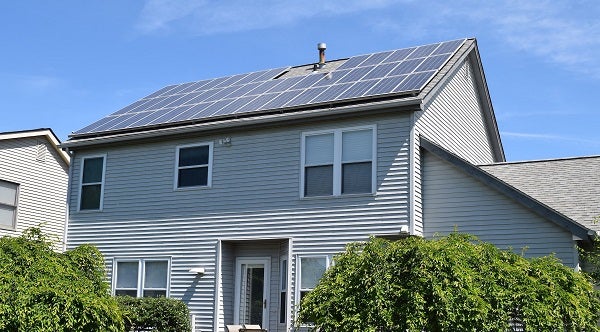Why are Ohio’s monopoly utilities resistant to customer-owned solar?

Solar photovoltaic (PV) installation costs have fallen by more than 70% in the past decade. The total capacity of installed solar has tripled since 2010. Solar now accounts for the majority of new electricity generation capacity additions, in large part due to how cost competitive it has become over other sources. Hundreds of thousands of Americans have propelled this solar momentum, installing solar arrays on their own homes and businesses.
This grassroots solar momentum combined with dramatic system cost declines has Ohio’s electric utilities worried. While they are seeking to expand their own solar portfolios, they are trying to discourage homeowners’ from exercising their right to make their own power.
Why do monopoly utilities see rooftop solar as a threat?
Electric utilities typically generate income two ways. They sell electricity to customers or they build electric grid infrastructure, such as power plants and transmission lines. Rooftop solar panels are a distributed power source. This means they create electricity at or near the source of use. This is counter to traditional electricity generation which occurs at large, centralized locations and is then transmitted long distances to the point of end use. Local generation reduces the need for costly new transmission capacity. Distributed solar also saves everyone money through reduced need for costly standby “peaker plants.” When electricity demand is highest in the summer is also when solar is producing at its peak. Distributed solar is a win for all electricity consumers. It also makes the entire grid more resilient and stable.
The emergence of solar PV as a cost effective and easy to maintain ‘generator’ has enabled us to become our own energy suppliers. So, as we install more solar, we purchase less electricity from the utilities and reduce the need for costly investment in new power plants and transmission lines. While solar means increased energy freedom, resilience and local job creation for Ohioans, utilities see it as lost revenue.
Increased solar adoption is good for all utility customers, as ratepayers are the ones who pay for rising energy costs and investments in new grid infrastructure. This reduction of need cuts into utility profit margins. Ohio’s largest utilities are investor owned utilities. This means they are managed as private, for profit entities that seek maximum revenue for shareholders. Major utilities in Ohio are proposing to double and triple the minimum amount all customers pay each month through fixed charges.
Customer-owned, ‘rooftop’ solar reduces revenue to utility shareholders by reducing demand for their products (electricity and power infrastructure). This is particularly concerning to utilities since they have seen overall growth in electric demand remain flat and even decline since 2009. This flat demand is due to energy efficiency and decreased industrial activity. Solar is poised to lower electricity demand from utilities further. So, utilities are trying to maintain their profit margins by blocking distributed solar’s growth. Because of this, we can expect to see more attempts, like the RPS freeze, by utilities to make it harder for individuals and businesses to go solar.
